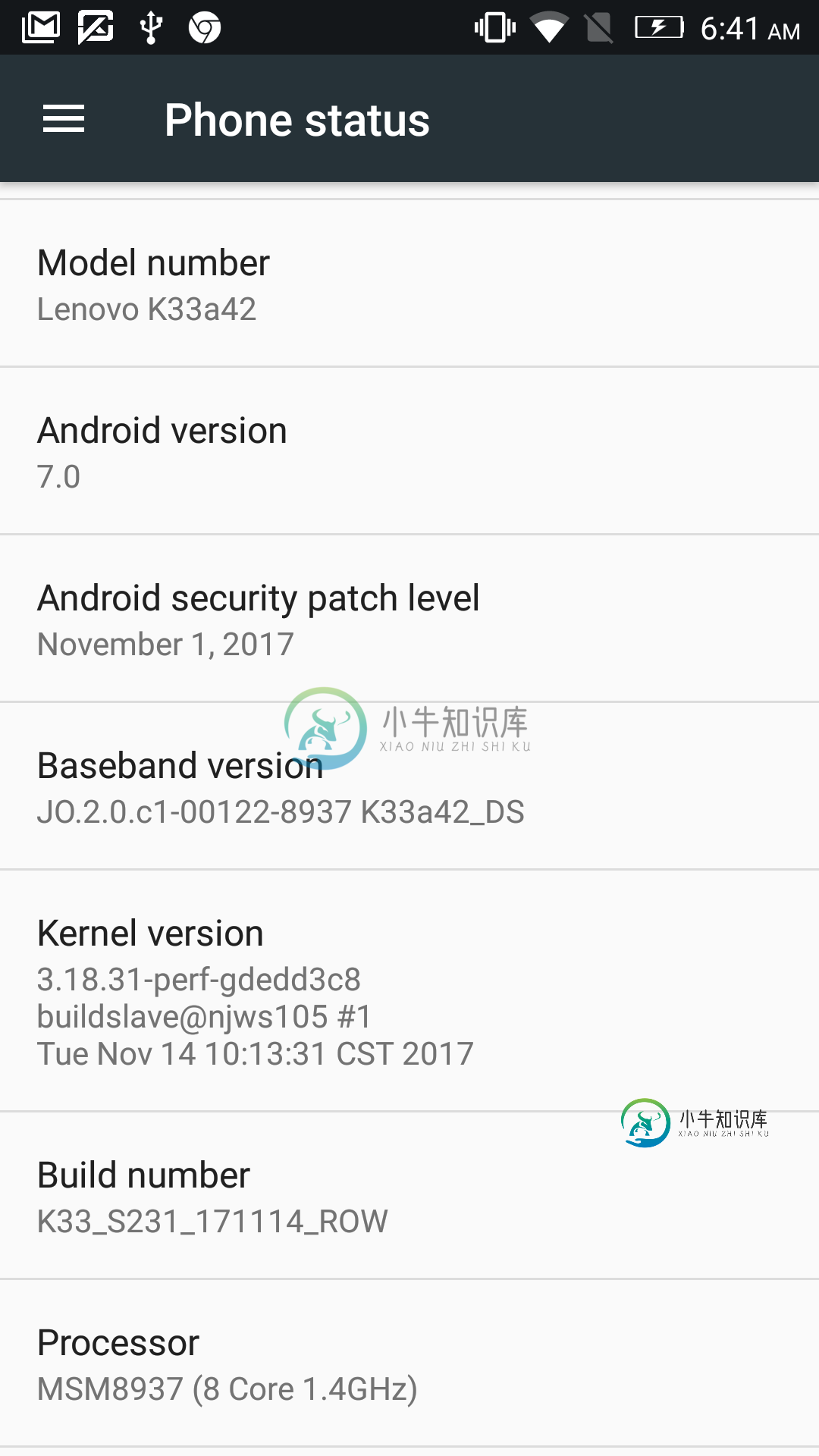当用户杀死应用程序(牛轧糖)时,前台服务崩溃并重新启动
我在这里遇到了一个问题,我想前台服务应该一直运行到它的任务完成,一旦任务完成,前台服务应该停止。但这里的问题是,即使它的前台服务——当用户仅在牛轧糖版本中关闭应用程序时,该服务也会被终止。我已经检查了Marshamallow、Oreo、Android pie版本,场景运行良好。但在牛轧糖和小米手机中,这种情况并不正常。
下面是我作为演示运行的服务代码
public class MyForeGroundService extends Service {
private static final String TAG_FOREGROUND_SERVICE = "FOREGROUND_SERVICE";
public static final String ACTION_START_FOREGROUND_SERVICE = "ACTION_START_FOREGROUND_SERVICE";
public static final String ACTION_STOP_FOREGROUND_SERVICE = "ACTION_STOP_FOREGROUND_SERVICE";
public static final String PRIMARY_CHANNEL = "default";
public MyForeGroundService() {
}
@Override
public IBinder onBind(Intent intent) {
// TODO: Return the communication channel to the service.
throw new UnsupportedOperationException("Not yet implemented");
}
@Override
public void onCreate() {
super.onCreate();
Log.d(TAG_FOREGROUND_SERVICE, "My foreground service onCreate().");
}
@Override
public int onStartCommand(Intent intent, int flags, int startId) {
if(intent != null)
{
String action = intent.getAction();
switch (action)
{
case ACTION_START_FOREGROUND_SERVICE:
startForegroundService();
Toast.makeText(getApplicationContext(), "Foreground service is started.", Toast.LENGTH_LONG).show();
break;
case ACTION_STOP_FOREGROUND_SERVICE:
stopForegroundService();
Toast.makeText(getApplicationContext(), "Foreground service is stopped.", Toast.LENGTH_LONG).show();
break;
}
}
return super.onStartCommand(intent, flags, startId);
}
/* Used to build and start foreground service. */
private void startForegroundService()
{
NotificationCompat.Builder mBuilder = notificationBuilder();
// Start foreground service.
startForeground(1, mBuilder.build());
Handler handler = new Handler();
handler.postDelayed(new Runnable() {
@Override
public void run() {
Intent intent = new Intent();
intent.setAction("SERVICE_CONNECTED");
LocalBroadcastManager.getInstance(getApplicationContext()).sendBroadcast(intent);
}
},10000);
}
private void stopForegroundService()
{
Log.d(TAG_FOREGROUND_SERVICE, "Stop foreground service.");
// Stop foreground service and remove the notification.
stopForeground(true);
// Stop the foreground service.
stopSelf();
}
public NotificationCompat.Builder notificationBuilder(){
NotificationCompat.Builder mBuilder= new NotificationCompat.Builder(this, PRIMARY_CHANNEL)
.setContentTitle("Dummy Title")
.setContentText("Dummy Message")
.setStyle(new NotificationCompat.BigTextStyle()
.bigText("Big text Message"
))
.setPriority(NotificationCompat.PRIORITY_DEFAULT);
if (android.os.Build.VERSION.SDK_INT >= Build.VERSION_CODES.LOLLIPOP) {
mBuilder.setSmallIcon(R.drawable.app_icon_white);
mBuilder.setColor(getResources().getColor(R.color.theme_color));
} else {
mBuilder.setSmallIcon(R.drawable.app_icon_white);
}
if (Build.VERSION.SDK_INT >= Build.VERSION_CODES.O) {
CharSequence name = getResources().getString(R.string.feroz_channel_name);
String description = getResources().getString(R.string.feroz_channel_description);
int importance = NotificationManager.IMPORTANCE_DEFAULT;
NotificationChannel channel = new NotificationChannel(PRIMARY_CHANNEL, name, importance);
channel.enableLights(true);
channel.setLightColor(getResources().getColor(R.color.theme_color));
channel.enableVibration(true);
channel.setDescription(description);
NotificationManager notificationManager1 = getSystemService(NotificationManager.class);
notificationManager1.createNotificationChannel(channel);
}
Intent stopIntent = new Intent(this, MyForeGroundService.class);
stopIntent.setAction(ACTION_STOP_FOREGROUND_SERVICE);
PendingIntent stopPlayIntent = PendingIntent.getService(this, 0, stopIntent, 0);
mBuilder.addAction(R.drawable.ic_launcher_new,"STOP",stopPlayIntent);
Intent intent = new Intent(this, CreateForegroundServiceActivity.class);
intent.setFlags(Intent.FLAG_ACTIVITY_NEW_TASK | Intent.FLAG_ACTIVITY_CLEAR_TASK);
PendingIntent pendingIntent = PendingIntent.getActivity(this, 0, intent, PendingIntent.FLAG_UPDATE_CURRENT);
mBuilder.setContentIntent(pendingIntent);
mBuilder.setUsesChronometer(true);
return mBuilder;
}
}
下面是从活动启动服务的代码
startServiceButton.setOnClickListener(new View.OnClickListener() {
@Override
public void onClick(View v) {
Intent intent = new Intent(CreateForegroundServiceActivity.this, MyForeGroundService.class);
intent.setAction(MyForeGroundService.ACTION_START_FOREGROUND_SERVICE);
if (Build.VERSION.SDK_INT >= Build.VERSION_CODES.O) {
startForegroundService(intent);
} else {
startService(intent);
}
}
});
Button stopServiceButton = (Button)findViewById(R.id.stop_foreground_service_button);
stopServiceButton.setOnClickListener(new View.OnClickListener() {
@Override
public void onClick(View v) {
Intent intent = new Intent(CreateForegroundServiceActivity.this, MyForeGroundService.class);
intent.setAction(MyForeGroundService.ACTION_STOP_FOREGROUND_SERVICE);
if (Build.VERSION.SDK_INT >= Build.VERSION_CODES.O) {
startForegroundService(intent);
} else {
startService(intent);
}
}
});
我认为start ForeGroundService运行良好,但start Service没有按预期工作。这种行为非常令人困惑,当我杀死应用程序前台服务时会重新启动,但如果我打开应用程序并按下按钮停止服务,我可以看到发送到服务的意图。但服务仍在运行。

附言:我想要一个服务,运行10分钟左右,无论应用程序是否在后台。它不应该以任何代价重新启动。例如,如果我从背景播放音乐,它应该一直播放到最后。音乐一结束就应该停止。我不想重启,下面是我启动服务时的日志,点击按钮并关闭应用程序:
2019-02-15 13:35:56.091 11120-11120/sample.androido.com.myapplication D/MyForeGroundService: My foreground service onCreate().
2019-02-15 13:36:01.956 1459-3975/? W/ActivityManager: Scheduling restart of crashed service sample.androido.com.myapplication/.services.MyForeGroundService in 1000ms
2019-02-15 13:36:02.975 1459-1509/? I/ActivityManager: Start proc 11170:sample.androido.com.myapplication/u0a154 for service sample.androido.com.myapplication/.services.MyForeGroundService
2019-02-15 13:36:03.674 11170-11170/? D/MyForeGroundService: My foreground service onCreate().
共有1个答案
来自Android官方文档中的startForegroundService()方法。
请注意,调用此方法不会使服务本身处于启动状态,即使名称听起来很像。您必须始终调用ContextWrapper。startService(Intent)首先告诉系统它应该保持服务运行,然后使用此方法告诉它更努力地保持服务运行。
根据上面的语句,您应该首先调用startService(),然后调用startForegroundService()
-
问题内容: 关于它有几个问题,但我总是读同一本书:“如果系统需要资源,该服务将被杀死”或“您无法构建永远运行的服务,因为它在后台运行的次数越多,越容易受到影响。被系统杀死”等等。 我面临的问题是:我的服务运行正常,并且可以预期,如果我运行我的应用程序,然后退出它,我的服务仍在运行,但是当我杀死我的应用程序时(通过转到“最近的应用程序”并对其进行扫描)离开)服务停止。在这一刻,如果我转到设置>>应用
-
问题是,当我在Google中使用授权运行此代码时,它会立即崩溃: 但是日志中的错误: 2019-06-22 17:55:42.652 29327-23222/?E/AudioSource:在已关闭的AudioSource 2019-06-22 17:55:43.240 2093-2616/?E/TouchFilter:setTouchFilter日志启用参数:0 2019-06-22 17:55:
-
在我的应用程序中,我有一个在后台(和前台)运行。 在这个中,有一个,当它完成时,我想在某个中启动应用程序并在中自动执行一些操作,即使我的应用程序被杀死或关闭,我也希望它能正常工作。 我看到了一些答案,这是其中之一,但它对我不起作用。我找到了一个更好的解决方案,并将其作为答案发布在下面,但仍然只有在应用程序关闭但未完全关闭时才有效。 如何从后台启动,即使应用程序已关闭或关闭?
-
我只兼职做Android开发(考虑到API的许多细微之处和低级水平,这似乎很有挑战性),并且在我的应用程序处于后台时接收通知有问题。我的目标是Android8.1。我的应用程序碰巧使用了Azure和Xamarin,但我不知道这些细节是否是问题所固有的。 如果我的应用程序在后台,有时会显示通知,但其他时候我的应用程序会因以下错误而崩溃: 我看到这样的文章:https://blog.xamarin.c
-
问题内容: 我正在制作一个带有mqtt客户端和后台服务的应用程序,当我收到某些mqtt消息时会发出通知。 我使用Paho库和服务作为客户端,只要我连接到wifi并打开代理,一切都可以正常运行。 我不希望通过Internet访问代理,所以当没有wifi可用时,客户端将断开连接,问题是当wifi重新连接时,mqtt客户端将不会重新连接。 我已经尝试了很多事情,但是最新的测试是让处理程序检查是否有互联网
-
问题内容: 我正在制作一个带有mqtt客户端和后台服务的应用程序,当我收到某些mqtt消息时会发出通知。 我使用Paho库和服务作为客户端,只要我连接到wifi并打开代理,一切都可以正常运行。 我不希望通过Internet访问代理,所以当没有wifi可用时,客户端将断开连接,问题是当wifi重新连接时,mqtt客户端将不会重新连接。 我已经尝试了很多事情,但是最新的测试是让处理程序检查是否有互联网

